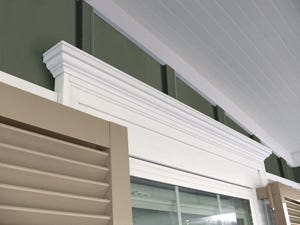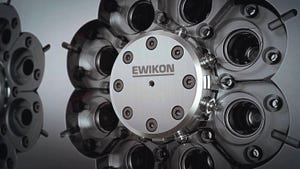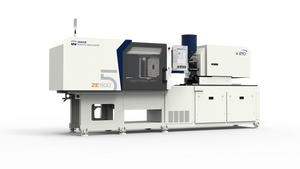PVC as a polymer material is ubiquitous. It is, in fact, the third most used resin behind polyethylene and polypropylene and, therefore, according to Jason Lyons, R&D Manager of polymer additives at Arkema (King of Prussia, PA), it's a material worth taking a new look at in terms of properties. PVC is a material that consists of many ingredients in its formulation, and traditionally the molecular weight of PVC has a value less than 100k, Lyons explained to PlasticsToday.
March 13, 2015
PVC as a polymer material is ubiquitous. It is, in fact, the third most used resin behind polyethylene and polypropylene and, therefore, according to Jason Lyons, R&D Manager of polymer additives at Arkema (King of Prussia, PA), it's a material worth taking a new look at in terms of properties. PVC is a material that consists of many ingredients in its formulation, and traditionally the molecular weight of PVC has a value less than 100k, Lyons explained to PlasticsToday.
Arkema is introducing its Plastistrength 566 acrylic process aid—a high molecular weight product offering improved melt strength for use in the extrusion of cellular PVC sheet and building products, including foam-core pipe, trim board, signage and foamed profiles for indoor and outdoor decorative touches on homes.
 Plastistrength 566 acrylic process aid allows compounders, formulators and converters to realize increased efficiencies in usage of up to 20% when compared with standard process aids, while maintaining cell structure and density requirements.
Plastistrength 566 acrylic process aid allows compounders, formulators and converters to realize increased efficiencies in usage of up to 20% when compared with standard process aids, while maintaining cell structure and density requirements.
Lyons explained that the new Plastistrength 566 increases the number of entanglements in the polymer melt, so that the material doesn't rupture as easily as neat PVC. "When you think about foam, you want the bubbles (the resin) to have enough strength, so that when you add the blowing agent they won't pop," he said, putting it into layman's terms. "Foam is one of the growing markets in PVC, whereas other markets are flat," said Lyons.
Due to its innovative design, Plastistrength 566 process aid delivers optimum melt strength and rheological behavior for high-quality foam formulations, while providing exceptional foaming efficiency compared with standard process aids. In a series of lab trials simulating industrial conditions for the Celuka process and free foam, it was shown that Plastistrength 566 process aid provided superior foaming effect, combined with a uniform, closed-cell structure and good surface finish in cellular PVC, according to the company.
Arkema developed this new process aid primarily to target the building and construction industry, where a wide range of products can benefit from the higher molecular weight additive. It gives good achievable foam density for products used in B&C. A foamed PVC deck would have a high density to withstand the 300-lb man test, whereas a trim board would have a lower foam density. While contractors are typically used to handling wood, one of the goals of Plastistrength 566 is to minimize the density of the product while maintaining the properties of wood, Lyons explained.
There are many B&C products that use foamed PVC in interior and exterior products, and demand is growing in this market for things such as decking, shutters, crown molding and foam-core pipe that can be used in applications not requiring a burst test, Lyons said. Foam-core pipe has an inner and outer layer with the foam sandwiched between and is light to handle.
"I think without question contractors as well as consumers are getting more used to plastics in various construction applications, such as replacing wood decks with mostly polymer composite materials," Lyons said. "As consumers become busier they want to minimize the care that products require, such as treating decks with water-proofing coatings and painting wood trim every few years," commented Lyons. "They just want to enjoy them. There's a strong drive for consumers to ask for polymer products."
Lyons noted that Arkema is starting to go to higher and higher molecular weight values. "We're increasing the efficiency the higher we go in values," he said. "Currently we're greater than 8 million molecular weight. The next step we want to take is to achieve ultra-high molecular weight value—over 10 million—for some trim board applications, but particularly for foam core pipe."
"Arkema also brings Plastistrength 566 process aid users an extra measure of technical support," Lyons remarked. "Arkema operates the North American industry's most comprehensive development center for process aids in King of Prussia. We bring a level of support and expertise that is unmatched in the marketplace, and we invite our customers to access our technical capabilities regularly to solve problems."
About the Author(s)
You May Also Like




